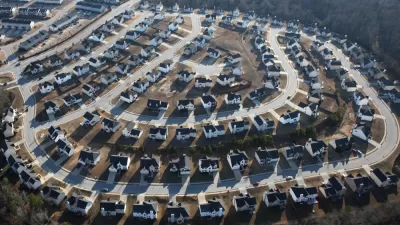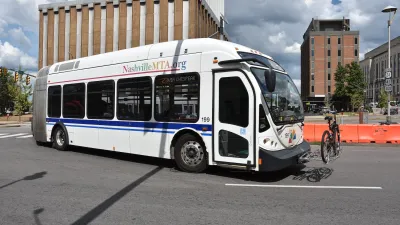The Oscar-winning film The Lives of Others recalls that famous question about governments who spy on their citizens: Who will watch the watchers? (Answer: Alberto Gonzalez.) A similar, if less cloak-and-dagger question applies to planning: Who will zone the zoners? While governments use zoning to keep polluting uses away from homes, what if the biggest polluter in a city is a government use?In most cities today, the most common polluting use is exempt from zoning: highways.
The Oscar-winning film The Lives of Others recalls that famous question about governments who spy on their citizens: Who will watch the watchers? (Answer: Alberto Gonzalez.) A similar, if less cloak-and-dagger question applies to planning: Who will zone the zoners? While governments use zoning to keep polluting uses away from homes, what if the biggest polluter in a city is a government use?
In most cities today, the most common polluting use is exempt from zoning: highways.
The dangers of highways to health is clear: children who live near a highway are twice as likely to develop asthma. If all that soot came from a single factory's smokestack, it would be in an industrial area far from homes. But along the edges of every interstate highway are fields that will one day be filled with houses, families, and children-a dangerous and incompatible use if there ever was one.
So if the land adjacent to heavy industry isn't zoned residential, doesn't it make sense to zone the land adjacent to highways for non-residential use as well? California has already considered a law requiring elementary schools be built at least 500 feet from highways, and New Haven residents are protesting plans for a new school next to two interstates. Prohibiting highways in residential areas and precluding new residential zoning along existing highways might change the calculus of highway building. It would no doubt be labeled an unfair burden. But the buffer zones may be less an unfair burden than a full assessment of the health costs of road building. They may even save money by preventing respiratory illness.
Keeping highways out of residential areas, or rezoning space along new highways for nonresidential use may make zoning once more an effective way to plan and protect citizens.

Alabama: Trump Terminates Settlements for Black Communities Harmed By Raw Sewage
Trump deemed the landmark civil rights agreement “illegal DEI and environmental justice policy.”

Planetizen Federal Action Tracker
A weekly monitor of how Trump’s orders and actions are impacting planners and planning in America.

The 120 Year Old Tiny Home Villages That Sheltered San Francisco’s Earthquake Refugees
More than a century ago, San Francisco mobilized to house thousands of residents displaced by the 1906 earthquake. Could their strategy offer a model for the present?

Ken Jennings Launches Transit Web Series
The Jeopardy champ wants you to ride public transit.

BLM To Rescind Public Lands Rule
The change will downgrade conservation, once again putting federal land at risk for mining and other extractive uses.

Indy Neighborhood Group Builds Temporary Multi-Use Path
Community members, aided in part by funding from the city, repurposed a vehicle lane to create a protected bike and pedestrian path for the summer season.
Urban Design for Planners 1: Software Tools
This six-course series explores essential urban design concepts using open source software and equips planners with the tools they need to participate fully in the urban design process.
Planning for Universal Design
Learn the tools for implementing Universal Design in planning regulations.
Clanton & Associates, Inc.
Jessamine County Fiscal Court
Institute for Housing and Urban Development Studies (IHS)
City of Grandview
Harvard GSD Executive Education
Toledo-Lucas County Plan Commissions
Salt Lake City
NYU Wagner Graduate School of Public Service




























